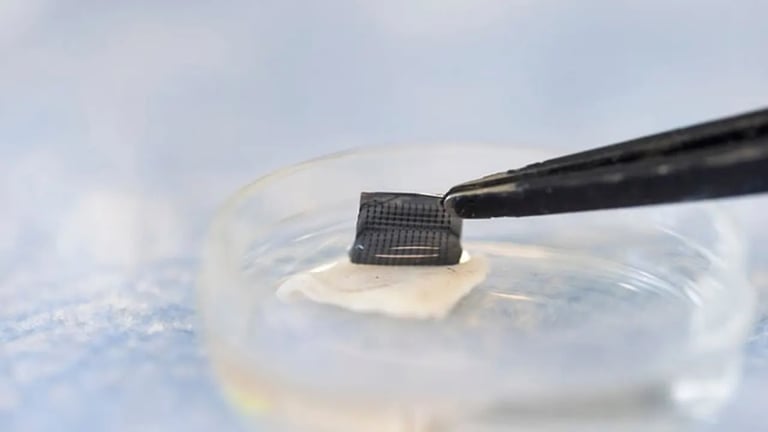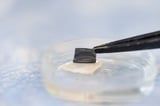Revolutionary ExoPatch: At-Home Melanoma Detection with Non-Invasive Skin Patch
August 27, 2025
Star-shaped microneedles coated with gel bind a cancer-exosome marker, allowing the ExoPatch to collect tumor-derived DNA and RNA from exosomes for early detection.
The University of Michigan has developed the ExoPatch, a silicone patch that detects melanoma by capturing cancer-derived exosomes from the skin’s epidermis, potentially enabling at-home testing without needles.
The patch penetrates only the epidermis, requires no blood draw, and uses a 0.6 mm microneedle array coated with a gel for a simple 15-minute skin press and a test-strip readout.
The design enables a minimally invasive sample from the skin’s surface, prioritizing user comfort and ease of use.
In mouse tissue, the ExoPatch captured about 11 times more melanoma-associated exosomal protein than healthy tissue, indicating strong cancer specificity.
Initial tests on pig and mouse skin showed the patch distinguished melanoma from healthy tissue with a significantly darker test signal in cancerous samples.
Funding for the study came from the National Institutes of Health, and the findings were published in Biosensors and Bioelectronics.
If proven effective, the at-home test could provide immediate results with professional follow-up for positives and potentially reduce the need for biopsies in initial screening.
Current work is preclinical; human trial data and regulatory approval for home use have yet to be established, with pilot studies planned to assess safety and effectiveness and potential adaptation to other cancers.
Researchers plan to conduct pilot human studies and clinical trials, with the potential to extend the technology to detect other solid tumors such as lung, breast, colon, prostate, and brain cancer.
Summary based on 2 sources
Get a daily email with more Science stories
Sources

Managed Healthcare Executive • Aug 27, 2025
Experimental Patch Could Make At-Home Melanoma Diagnosis Easy as COVID Test
LiveNOW from FOX • Aug 9, 2025
At-home skin cancer test could be one step closer